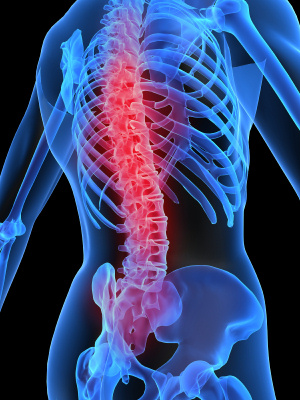13 Jul Thermal vs. Cold Laser
Demystifying Laser Technology
Thermal or high power lasers are capable of producing a substantial amount of heat. This capability makes thermal lasers useful in industrial application such as welding and cutting, as well as medical applications that involve the destruction of tissue. Because they combine power with precision, thermal lasers have many beneficial uses in surgical applications.
Low level lasers, on the other hand, do not produce heat, but are able to penetrate the interior of the cells with highly focused light in the 10-250mW range. This light stimulates the cell to produce ATP (energy) which in turn fuels the body to begin healing itself. Low intensity laser energy initiates and stimulates many beneficial physiological processes within the cell. These include cell metabolism, membrane permeability, etc. In essence it promotes the healing of damaged cells which makes it applicable in the therapy of many pathologies. Moreover, it is non-destructive with regard to the target tissue.
Laser light, properly administered, stimulates the release of powerful neurochemicals in the brain which alleviate or greatly reduce pain, create deep relaxation and reduce or eliminate cravings. The procedure is non-invasive, painless, and completely safe. The lasers used at Healthpoint Laser Clinic are Health Canada approved, and are the finest technology on the market today.

Healthpoint Laser Clinic uses Theralase and MedX Lasers
A therapeutic laser system is athermic (no heat), with no appreciable heat transfer to the tissue. (< 0.65 degree Celsius) An athermic laser system, therefore, is not able to cause tissue damage as tissue damage arises only through thermal actions.
Thermic lasers, on the other hand, are used for invasive surgery as they cut, burn or vaporize tissue to achieve tissue removal.
Therapeutic lasers utilize a wavelength of monochromatic light in the 630 to 905 nanometer (nm) range, known as the “therapeutic window”. A wavelength of 905 nm has the least absorption in this “therapeutic window”, due to the primary influence of melanin. In the 630 to 905 nm range, the 905 nm wavelength is absorbed least by the skin and hence provides the greatest penetration of photons into the underlying tissues. It is this principle which creates the ability to “inject” photons of energy harmlessly into tissue, “energizing” or “bio stimulating” this tissue into an accelerated rate of healing.
The tissue effect of lasers can best be characterized by understanding the absorption of light in tissue. The three main components of tissue that affect the absorption of light are water, hemoglobin (pigment that renders blood red) and melanin (pigment that gives skin its natural color). The absorption curves for these three substances versus the laser wavelength will determine the precise impact that a particular laser will have on tissue.
The purpose of a low level laser is to stimulate. The lower energy levels and the unfocused light beam do not impart large amounts of energy. They do provide enough energy to excite the mitochondria and cause it to undertake big-chemical reactions.
The mitochondria once stimulated by the application and infusion of light energy, produces enzymes and ATP. Cells communicate and operate using chemical signals – enzymes. Low level laser therapy is safe because cells have a natural ability to resist over-stimulation. It is not possible to harm tissue by overdosing.
Serotonin is a neurotransmitter that is used as a marker chemical for low level laser therapy. A patient who receives this type of therapy will, within 24 hours, test positive for increased serotonin by-products in their urine (Walker, Neuroscience Letters). The amount of 5- hydroxyindoleactic acid, the serotonin byproduct, is disproportionately large in comparison to the amount of energy put into the system by the treatment.
The photo-activation of enzymes used provides a huge amplification factor for initiating a biological response using light energy. (Smith, The Photo-biological Basis of LLLT). The measurable effects of LLLT appear in calcium ion channels, RNA and DNA at the cellular level, and the production of proteins, fibroblasts, Iymphocytes and leukocytes (Basford, The Orthopedics Journal).
There is a well-documented inter-cellular communication phenomena of “enzyme cascading.” Once cells are stimulated to produce an enzyme with the LLLT laser, the adjacent cells are stimulated by the presence of the newly produced enzymes to also produce the same chemical, effectively duplicating and enlarging the effects of light stimulation.
All of the enzymes produced are those naturally used and produced by the cell. They are produced in the ratios and quantities normally used by the body, and the result is a natural healing process. The major difference between a laser and a powerful normal light is the laser beam’s ability to travel long distances without being dispersed. This is known as coherence, and it enables the laser to focus its power very specifically. This source of light has been shown to have a strong therapeutic effect. The Theralase therapeutic lasers do not produce heat or cut like industrial lasers or powerful surgical lasers. At specific wavelengths, a Theralase laser can have profound beneficial effects on the functioning of human cells – the “building blocks” of all the body systems and body tissue (bone, skin, muscle, etc.)
The energy produced by a Theralase laser can be directed at damaged tissue cells, and by giving the cell a massive energy boost, helps to speed up the healing process. Lasers have been shown to improve the repair of tissues, from injuries such as muscle strains/sprains, ligament and tendon injuries, open wounds and bone injuries including fractures and joint dysfunction.
[courtesy of Theralase Technologies Inc.]
